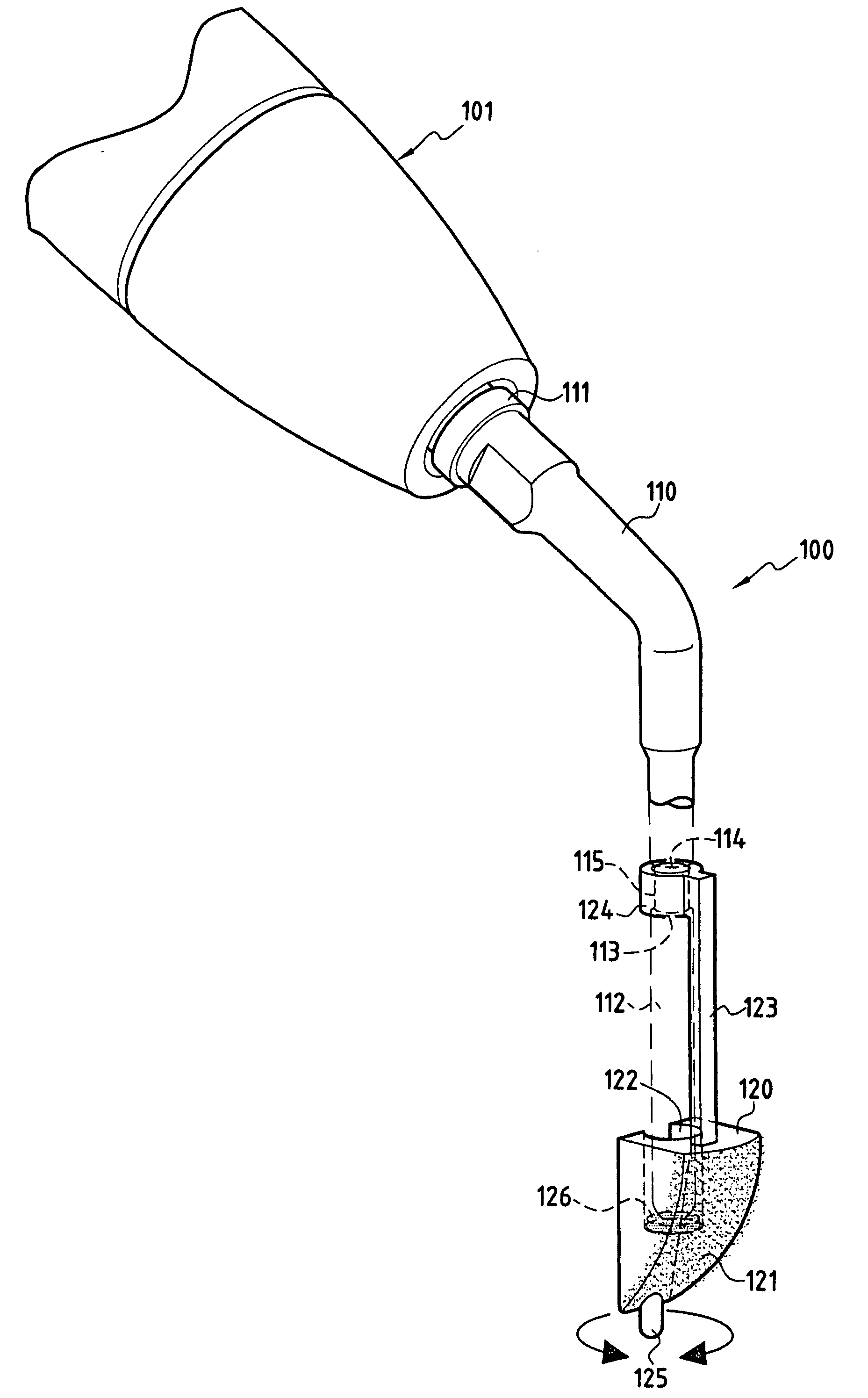Cutting insert for a vibrating dental instrument
a dental instrument and cutting insert technology, applied in the field of vibrational instruments, can solve the problems of unusable tips, large risk of attacking adjacent teeth, and the use of such tips reduces the depth of grinding that can be carried out, and achieves the effect of no risk of damage to adjacent teeth
- Summary
- Abstract
- Description
- Claims
- Application Information
AI Technical Summary
Benefits of technology
Problems solved by technology
Method used
Image
Examples
Embodiment Construction
[0036]FIG. 3 illustrates a tip 100 in accordance with a first embodiment of the present invention. The tip 100 comprises a body 110 made up of a single piece, for example made of metal, which has a first end 111 adapted to be fixed to a handpiece 101. In a well-known manner, the handpiece 101 is a sound or ultrasound vibration generator which can comprise a transducer (not depicted) formed for example from a piezoelectric material and mechanically coupled rigidly to the tip so as to transmit vibratory waves thereto. The second end of the body 110 forms a tool holder 112 which is intended to reproduce the vibrations transmitted by the handpiece. The tool holder 112 is rigidly assembled with the body of the tip 110 (nut and bolt system, welding or simple extension of the tip).
[0037]In accordance with the invention, a tool 120 is disposed at the tool holder 112. The tool 120 comprises a cavity 122 serving as a housing for the end of the tool holder 112. The tool 120 is connected to the...
PUM
 Login to View More
Login to View More Abstract
Description
Claims
Application Information
 Login to View More
Login to View More - R&D
- Intellectual Property
- Life Sciences
- Materials
- Tech Scout
- Unparalleled Data Quality
- Higher Quality Content
- 60% Fewer Hallucinations
Browse by: Latest US Patents, China's latest patents, Technical Efficacy Thesaurus, Application Domain, Technology Topic, Popular Technical Reports.
© 2025 PatSnap. All rights reserved.Legal|Privacy policy|Modern Slavery Act Transparency Statement|Sitemap|About US| Contact US: help@patsnap.com



